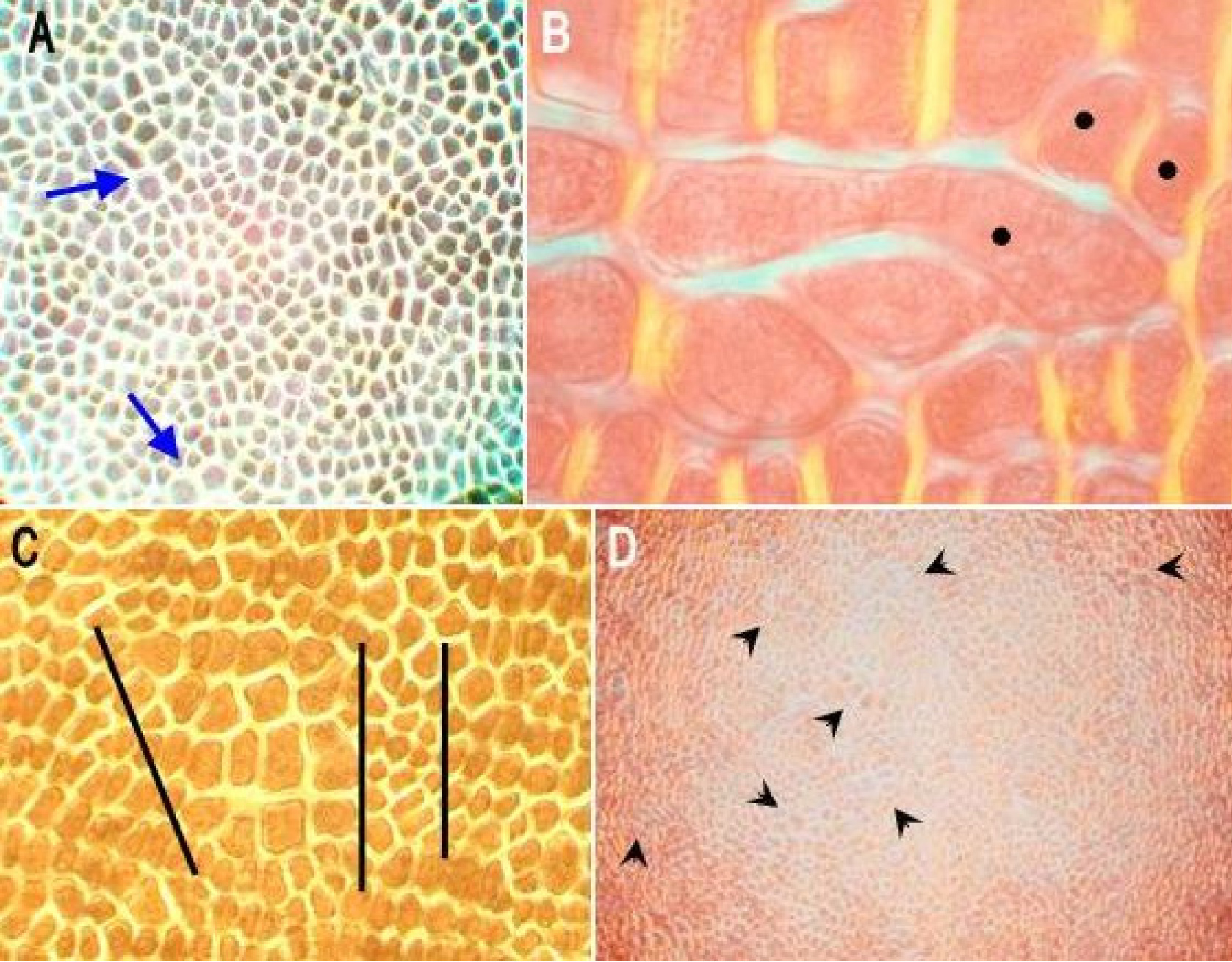Variability of barley aleurone layer induced by X-rays
Abstract
A series of Hordeum vulgare cultivars was irradiated by X-rays to induce mutations in endosperm. Many structural defects of endosperm were revealed in plants irradiated 8 DAF. Change of a cell cycle was especially frequent and this was visible in the form of clones of small or large cells in the aleurone layer. X-irradiation appeared as a successful tool in the study of development.
References
Fedoroff N.V. 1988. Mobile genetic elements in maize. In: Malacinski G.M. (ed.), Developmental genetics of higher organisms: 97–126. Macmillan Publishing Company, New York.
Felker F.C., Peterson D.M., Nelson O.E. 1985. Anatomy of immature grains of eight maternal effect shrunken endosperm barley mutants. Am. J. Bot. 72: 248–256.
Ivanovskaya E.V. 1983. Citoèmbriologičeskoe issledovanie differencirovki kletok rastenij. Izdatel’stvo Moskovskogo Universiteta, Moskva.
Kosina R. 1988. Relationship between xylem bundle and subaleurone endosperm layer in wheat tetraploids caryopses. Hodowla Roślin, Aklimatyzacja i Nasiennictwo 32: 235–237.
Kosina R. 1989a. Response of caryopsis structure to stress conditions. Vorträge für Pflanzenzüchtung 15 (23): 1.
Kosina R. 1989b. Mozaika morfologiczna pszenicy. Materiały 10 Zjazdu Polskiego Towarzystwa Genetycznego, Wrocław: 189.
Kosina R. 2007. Some topics on the grass mosaics. Frey L. (ed.), Biological issues in grasses: 159–167. W. Szafer Institute of Botany, Polish Academy of Sciences, Kraków.
Kosina R., Tomaszewska P. 2010. Microstructure of endosperm in some intergeneric amphiploids and their parental species of the Triticeae tribe. Ann. Wheat Newslet. 56: 200–201.
Kosina R., Zając D. 2010. Instability of some endosperm traits in Trtiticum × Aegilops amphiploids. Ann. Wheat Newslet. 56: 198–199.
Mlčochová L., Chloupek O., Uptmoor R., Ordon F., Friedt W. 2004. Molecular analysis of the barley cv. ‘Valticky’ and its X-ray-derived semidwarf-mutant ‘Diamant’. Plant Breed. 123: 421–427.
Puławska Z. 1982. Tissues development in stems of Aristolochia clematitis L. in the point of view of multicellular complexes formation. Acta Soc. Bot. Polon. 51: 107–125.
Sawicki J. 1951. Studies on the structure of the aleurone layer in varieties of the cultivated barley Hordeum sativum Jess. Bull. Ac. Pol. Sci. Lett. B1: 101–148.


This work is licensed under a Creative Commons Attribution-NonCommercial-NoDerivatives 4.0 International License.
The journal is licensed by Creative Commons under BY-NC-ND license. You are welcome and free to share (copy and redistribute the material in any medium or format) all the published materials. You may not use the material for commercial purposes. You must give appropriate credit to all published materials.
The journal allow the author(s) to hold the copyrights and to retain publishing rights without any restrictions. This is also indicated at the bottom of each article.





